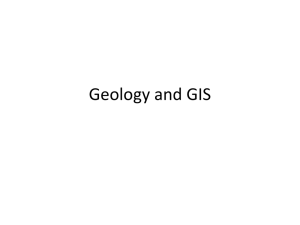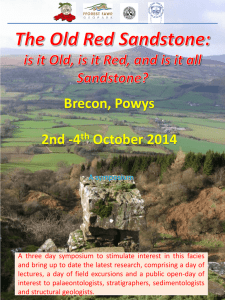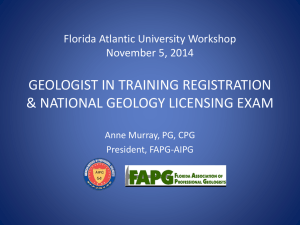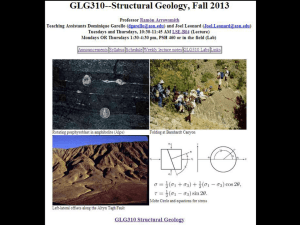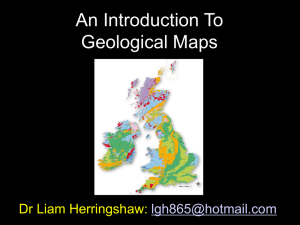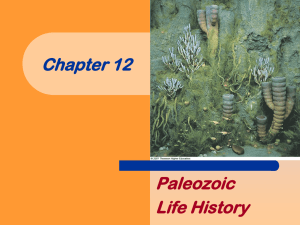Late Paleozoic Life
advertisement
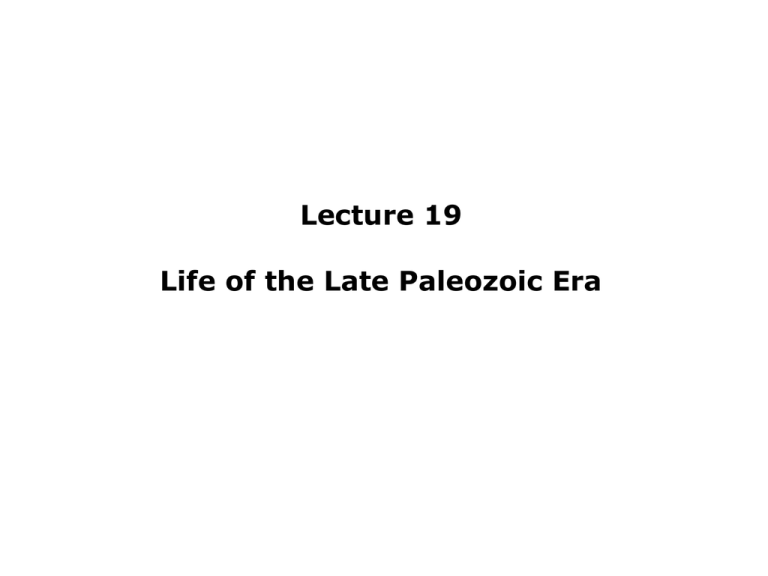
Lecture 19 Life of the Late Paleozoic Era Historical Geology I II A) B) III Late Paleozoic Life Late Paleozoic Marine Communities Late Paleozoic Land Communities Plants 1) 2) Spore-bearing Plants Gymnosperms 1) 2) Reptiles The Amniotic Egg Metazoans (Animals) The Permian Mass Extinction Late Paleozoic Life Historical Geology Late Paleozoic Marine Communities Historical Geology Late Paleozoic Marine Communities Phylum: Echinodermata Class: Crinoidea Historical Geology Late Paleozoic Marine Communities Phylum: Echinodermata Class: Blastoidea Petremites Historical Geology Late Paleozoic Marine Communities Productid Brachiopods index fossils for the Permian period spines were attached at raised bumps found on fossil shells Historical Geology Late Paleozoic Marine Communities Fusulinids Kingdom: Protista Historical Geology Late Paleozoic Life Plants Historical Geology Late Paleozoic Land Flora Historical Geology Late Paleozoic Land Flora Lycopsids Lepidodendron stem Baragwanathia Lepidostrobus cone Lycopodium Historical Geology Late Paleozoic Land Flora Sphenopsids Sphenopsids were segmented spore plants that also achieved giant sizes Calamites, Annularia Modern sphenopsids include “horsetails” Historical Geology Late Paleozoic Land Flora The Advantage of Seeds Historical Geology Late Paleozoic Land Flora Seed Ferns Glossopteris Historical Geology Late Paleozoic Life Insects Insects had appeared in Devonian time Wingless forms Insects underwent evolutionary radiation in Carboniferous time Primitive winged forms (dragon flies) Forms with folding wings Historical Geology Late Paleozoic Life The Amniotic Egg Historical Geology Late Paleozoic Life Reptile Evolution Historical Geology Late Paleozoic Life Reptile Evolution Historical Geology Late Paleozoic Life Reptile Evolution - Pelycosaurs evolved from the protorothyrids during the Pennsylvanian The herbivore Edaphosaurus the dominant reptile group by the Early Permian evolved into a diverse assemblage The carnivore Dimetrodon Historical Geology Late Paleozoic Life Reptile Evolution - Therapsids Moschops Dicynodon diverse, mammal-like reptiles originated in the Permian but survived into the Triassic period Historical Geology Late Paleozoic Life Reptile Evolution - Therapsid Characteristics small- to medium-sized animals displaying many mammalian features fewer bones in the skull due to fusion of many of the small skull bones enlargement of the lower jawbone differentiation of the teeth for various functions such as nipping, tearing, and chewing food and a more vertical position of the legs for greater flexibility, as opposed to the sideways sprawling legs in primitive reptiles Historical Geology The Permian Mass Extinction Losses Species: 90-95% Historical Geology The Permian Mass Extinction fusulinids tabulate corals trilobites crinoidea rugose corals brachiopods blastoidea bryozoans porifera gastropoda Historical Geology The Permian Mass Extinction Global Cooling (Glaciation Marine anoxia began in Late Permian, extended through Early Triassic Negative shift in d13C values at extinction level (continental and marine sections) Age of massive Siberian flood basalts is same as extinction Climatic warming and drying near extinction level Rapid Sea Level Oscillations Historical Geology The Permian Mass Extinction Deep-sea anoxic interval (Japan) Historical Geology The Permian Mass Extinction 13 d C isotopic shift (Italian Alps) Historical Geology The Permian Mass Extinction Siberian Flood Basalts Reichow et al. Science 2002 Historical Geology The Permian Mass Extinction Siberian Flood Basalts 45 identified lava flows 400m to 3,700m thick Volume of 1.5 to 3 × 106 km3 Duration of eruptions was only ~600 ky Historical Geology The Permian Mass Extinction Climate Change Change from meandering to braided river systems in South Africa and Urals Reduction in bank-stabilizing vegetation Widespread charcoal horizons, desert sedimentation, warm indicators in paleosols (China, Australia, Antarctica) Abrupt change from Glossopteris- to Dicroidium-dominated floras (Australia)
